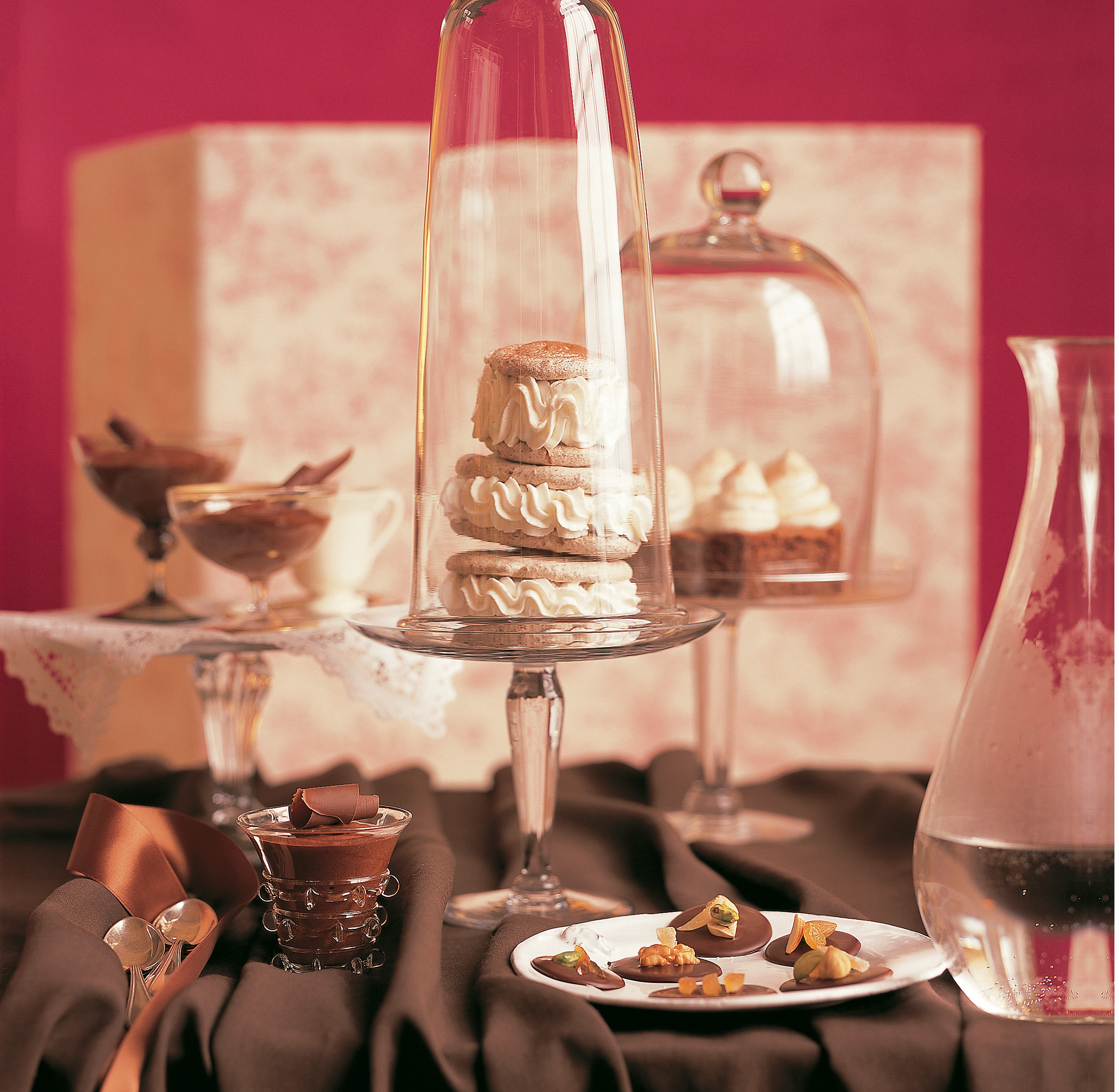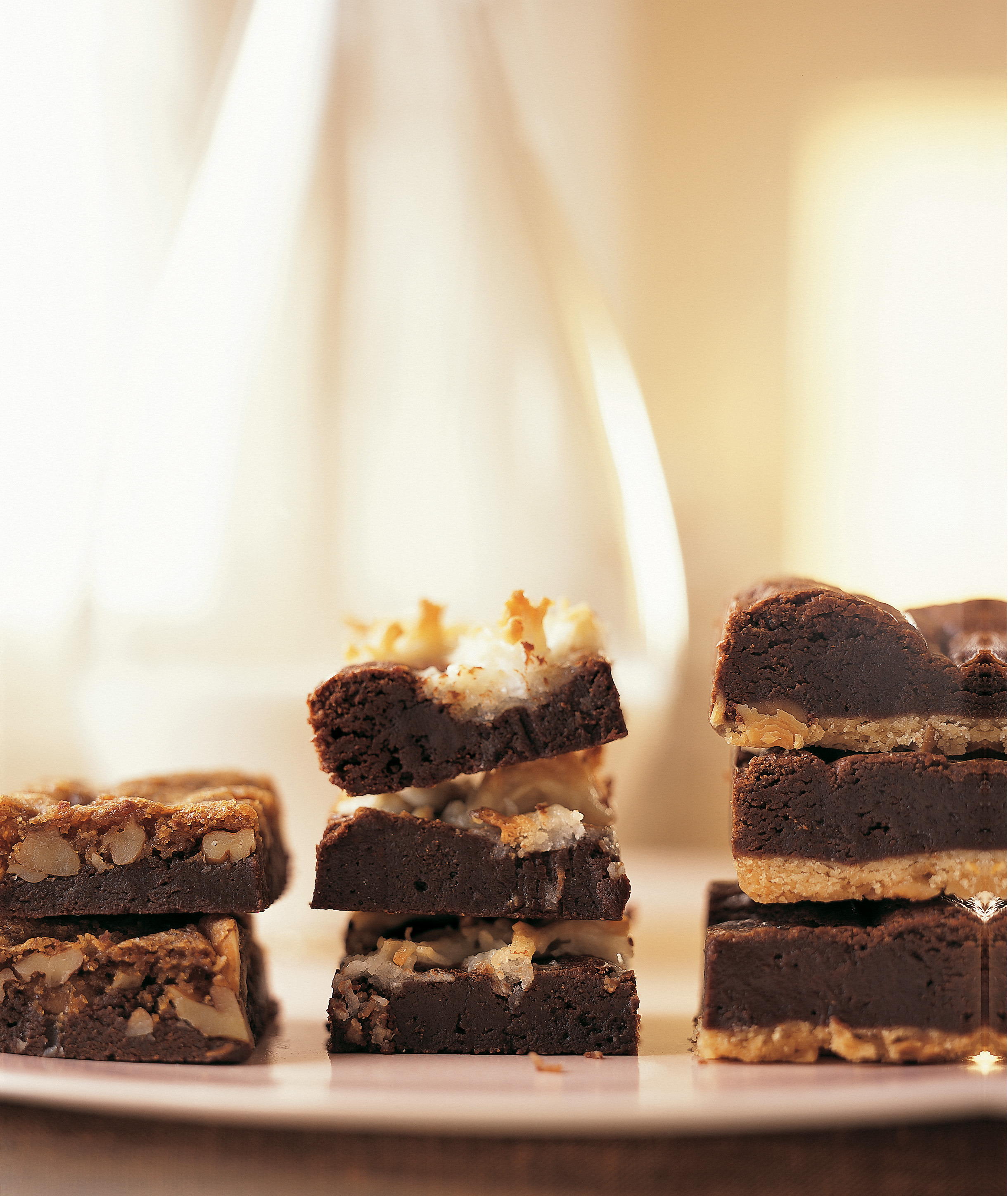[box type=”shadow”]This blog post is brought to you by Alice Medrich, instructor of the Bluprint class Decadent Chocolate Cakes.
Three lucky readers will win a FREE, autographed copy of her new book Seriously Bitter Sweet. To enter, just head here by Saturday, December 28, 2013. Then, comment on this blog post and let us know your No. 1 tip for baking. We’ll randomly select three winners on December 29.[/box]

Excerpted from Seriously Bitter Sweet by Alice Medrich (Artisan Books). Copyright (c) 2013. Photographs by Deborah Jones.
Everyone can have better results by remembering that baking and working with chocolate are a little more finicky and detail-oriented than regular cooking. Here are my 10 best tips to improve your game in the baker’s kitchen.
1. Read the introductory sections and appendixes of cookbooks.
These sections often include critical details about the author’s mindset, preferences, ingredients and techniques.
2. Use the flour the recipe specifies, and use a scale for measuring.
Weighing ensures that you really are using the same amounts as the person who created the recipe. If recipes do not give weights, find out (in an introductory section of the book, hopefully) how the author used her measuring cup: did she dip it into the flour, or spoon the flour lightly into it before leveling? This difference can profoundly affect baking results.
3. Locate equipment and measure all of your ingredients before you start to mix.
Doing so ensures that you won’t have to stop and search for supplies or ingredients while your batter deflates or your melted chocolate hardens.

4. Oven rack position makes a difference.
Unless otherwise instructed, position the oven rack just below the center of the oven (also referred to as “in the lower third”) when baking one item, or in the upper and lower thirds when baking with two baking pans (convection ovens not withstanding). About halfway through the baking time, always rotate your pans from front to back, and, if applicable, from the upper to the lower rack.
5. Pan size makes a difference.
If a recipe calls for an 8-inch round pan, you might think it’s fine to use your 9-inch pan. But a 9-inch pan is actually 25 percent larger than an 8-inch one, so your cake will be much shorter and it will be done much sooner — and it will probably overdone by the time the timer beeps. If you don’t want to buy a larger pan, increase the recipe by 25 or 30 percent for a 9-inch pan, or by 50 percent for a 10-inch pan.
6. Pan material makes a difference.
A metal pan bakes differently than a glass or crockery pan. Use the type of pan called for. If you must use a glass pan when a metal one is called for, decrease the oven temperature by about 25 degrees and look for doneness a little early.
7. Learn to melt chocolate without burning or causing it to “seize.”
Here’s how: Chop the chocolate with a dry knife on a dry board and put it in a dry container; dark chocolate can be chopped coarsely, white or milk chocolate should be finely chopped. Melt dark chocolate in the top of a double boiler over barely simmering water — it doesn’t matter if the bottom of the container touches the water or not, so long as the chocolate itself does not touch water.
Or, even better than a double boiler (trust me), put the chocolate in a stainless steel bowl and set it directly into a wider skillet of barely simmering water. In either case, stir frequently and remove the chocolate as soon as — or just before — it is completely melted.
What about melting white chocolate or milk chocolate? Do it the same way, but turn the heat off under the skillet or double boiler for 60 seconds before adding the container of chocolate to it.

8. When white chocolate is called for, use the real thing rather than chocolate chips or “white coating.”
Real white chocolate is made of cocoa butter rather than palm kernel oil or other vegetable fats. Read the ingredient labels if you are unsure.
9. Stop using chocolate chips in recipes unless they are specifically called for.
Instead, use bar chocolate (or professional pieces) of the type called for in the recipe. If a recipe calls for a dark, bittersweet or semisweet chocolate with a specific cacao (cocoa) percentage, choose by the percentage rather than the name.
10. Try a recipe exactly as written the first time you make it.
Otherwise, when results are disappointing, you won’t know whether it was the recipe itself or the (seemingly unimportant) changes that you made.
[box type=”shadow”]
Enter to win a FREE signed copy of Seriously Bitter Sweet!
Click here to enter the giveaway and then answer the question below for a chance to win.
Please note: You must live in the United States or Canada in order to be eligible.
What’s your No. 1 tip for baking?
[/box]
About Alice Medrich
 Author, pastry chef and teacher, Alice Medrich is one of the country’s foremost experts on chocolate and chocolate desserts. Since 1976, Alice’s innovative ideas and insistence on quality ingredients have influenced a generation of confectioners, pastry chefs and home cooks. She has appeared on the Food Network’s Chef Du Jour and Baker’s Dozen, and Julia Child’s PBS series Baking with Julia. Her nine cookbooks have been honored by the Beard Foundation and the IACP. The latest is Seriously Bitter Sweet (Artisan Books, 2013). Alice lives in Berkeley, Calif., and keeps her fans updated at AliceMedrich.com.
Author, pastry chef and teacher, Alice Medrich is one of the country’s foremost experts on chocolate and chocolate desserts. Since 1976, Alice’s innovative ideas and insistence on quality ingredients have influenced a generation of confectioners, pastry chefs and home cooks. She has appeared on the Food Network’s Chef Du Jour and Baker’s Dozen, and Julia Child’s PBS series Baking with Julia. Her nine cookbooks have been honored by the Beard Foundation and the IACP. The latest is Seriously Bitter Sweet (Artisan Books, 2013). Alice lives in Berkeley, Calif., and keeps her fans updated at AliceMedrich.com.

Share tips, start a discussion or ask one of our experts or other students a question.
No Responses to “10 Tips for Successful Baking”